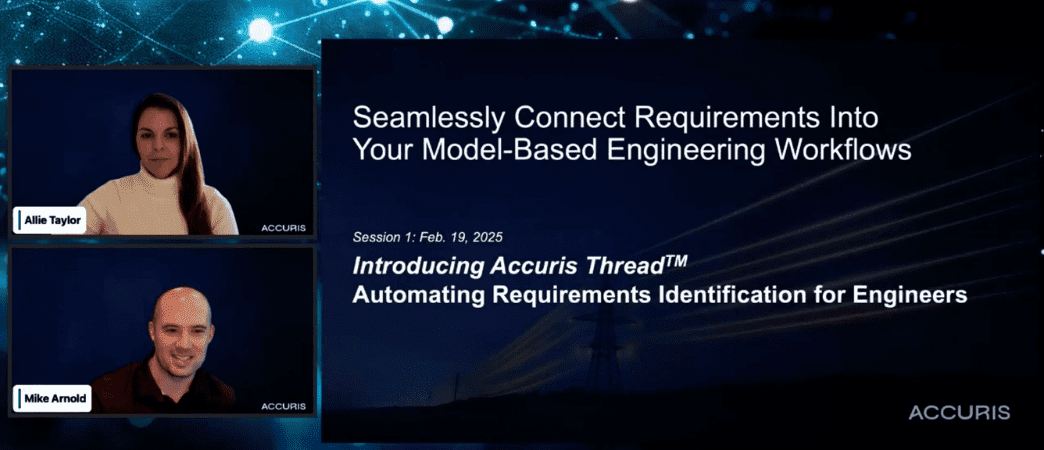Bridging the Gap: How Automated Requirements Extraction Accelerates Model-Based Systems Engineering
The journey to a model-based enterprise is filled with challenges—especially when it comes to managing unstructured data and ensuring requirements traceability. In our recent webinar, Introducing Accuris Thread—Automating Requirements Identification for Engineers, we explored how automating the extraction of requirements can drive digital transformation, improve efficiency, and reduce costly errors in engineering workflows.
The Challenge: From Unstructured to Structured Data
For years, engineers have spent countless hours manually decomposing standards, highlighting key requirements, and re-entering them into systems—introducing inefficiencies and the risk of human error. This manual process slows down projects, increases rework, and makes it difficult to maintain a true digital thread across the engineering lifecycle. Moving from document-based to model-based systems engineering (MBSE) is a necessary but complex transition. Many organizations still struggle to establish a reliable digital traceability and change management process, leaving requirements fragmented across engineering workflows.
The Solution: Accuris Thread
Accuris Thread automates requirements identification, providing engineers with a structured and efficient way to extract critical information. By extracting and exporting requirements data to be integrated into product lifecycle management (PLM) and requirements management systems, Thread helps ensure that the digital thread remains intact from initial requirement identification through to validation and compliance. With features like automated identification of requirements, AI-driven similarity analysis, and export of requirements for integration into existing engineering ecosystems, Accuris Thread is redefining how engineers interact with standards and specifications. The solution enables:
- Increased Speed & Efficiency: Engineers can now identify requirements in seconds rather than hours, saving 90% of time and reducing project timelines by eliminating the need for manual extraction.
- Enhanced Accuracy: Machine-assisted extraction minimizes human errors, enhancing accuracy from 70% on a first time manual pass-through to 90% with Thread – helping to ensure that critical requirements aren’t overlooked.
- Export and Integrate: Accuris Thread exports requirements data for threading into existing engineering tools, including PLM and requirements management systems, to maintain traceability across the digital thread.
- Risk Reduction & Cost Savings: Streamlining the process decreases rework and helps teams stay aligned throughout the engineering lifecycle, ultimately reducing costs, enhancing traceability, optimizing change management, and improving time to market.
Access Part 1 Instantly & Register for Part 2
Get instant access to expert insights on automating requirements identification and see how Accuris Thread improves efficiency, accuracy, and collaboration in real-world applications. Watch the full Session 1 webinar, Introducing Accuris Thread – Automating Requirements Identification for Engineers, on-demand and hear directly from our product experts about leveraging automation to streamline engineering workflows today.
By signing up, you’ll also be registered for Part 2 of our webinar series, Bridging the Gap—Seamless Integration of Requirements with Accuris Thread, where a guest speaker from Repsol will share real-world insights on how Accuris Thread has transformed their engineering workflows—bridging gaps, reducing manual effort, and improving collaboration across teams.
Live Date: April 2, 2025
Duration: 30 Minutes
Time: 10 AM PT / 1 PM ET

